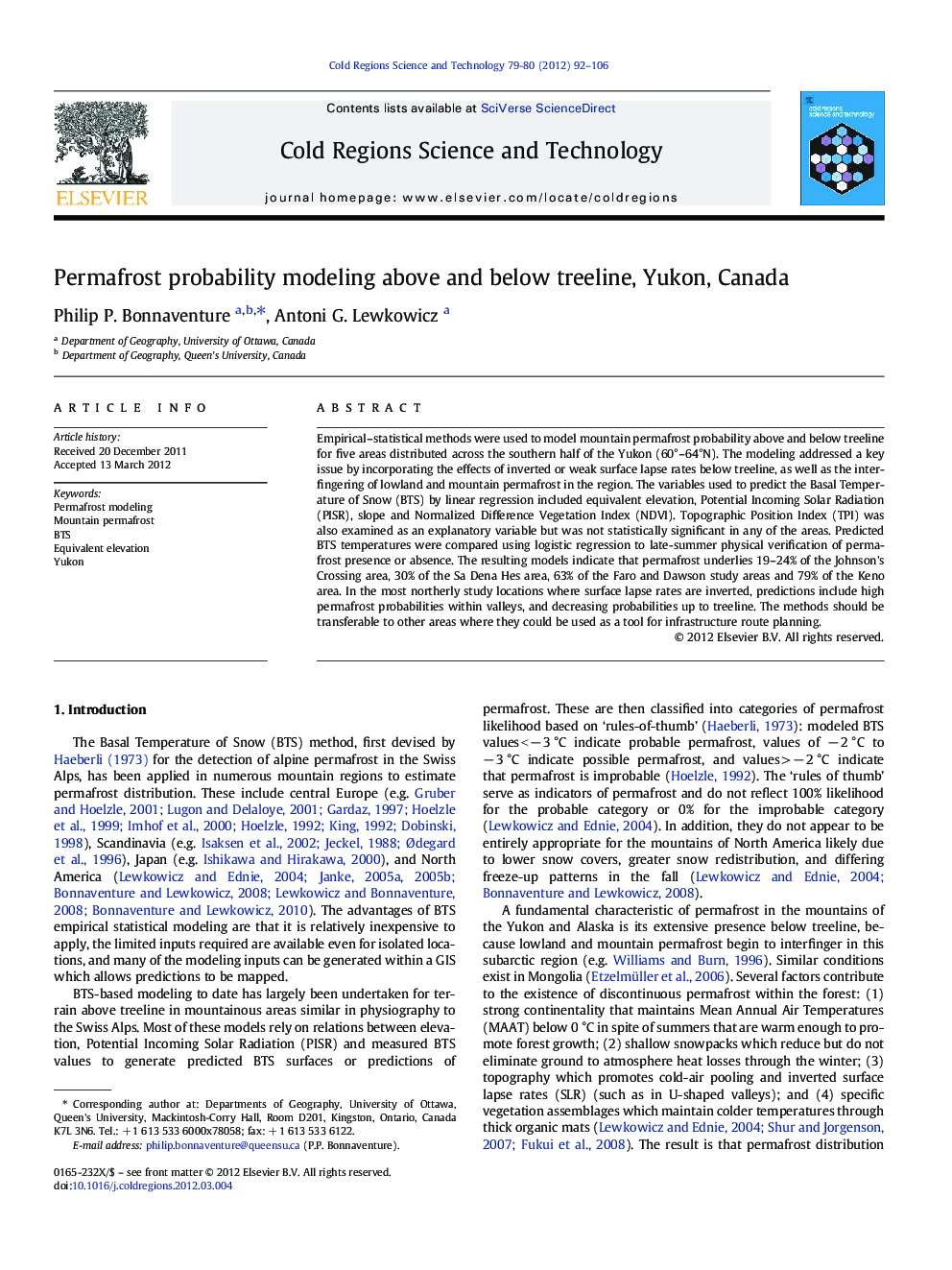| Article ID | Journal | Published Year | Pages | File Type |
|---|---|---|---|---|
| 4675917 | Cold Regions Science and Technology | 2012 | 15 Pages |
Empirical–statistical methods were used to model mountain permafrost probability above and below treeline for five areas distributed across the southern half of the Yukon (60°–64°N). The modeling addressed a key issue by incorporating the effects of inverted or weak surface lapse rates below treeline, as well as the interfingering of lowland and mountain permafrost in the region. The variables used to predict the Basal Temperature of Snow (BTS) by linear regression included equivalent elevation, Potential Incoming Solar Radiation (PISR), slope and Normalized Difference Vegetation Index (NDVI). Topographic Position Index (TPI) was also examined as an explanatory variable but was not statistically significant in any of the areas. Predicted BTS temperatures were compared using logistic regression to late-summer physical verification of permafrost presence or absence. The resulting models indicate that permafrost underlies 19–24% of the Johnson's Crossing area, 30% of the Sa Dena Hes area, 63% of the Faro and Dawson study areas and 79% of the Keno area. In the most northerly study locations where surface lapse rates are inverted, predictions include high permafrost probabilities within valleys, and decreasing probabilities up to treeline. The methods should be transferable to other areas where they could be used as a tool for infrastructure route planning.
